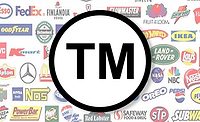What Should Roofing Contractors Expect to See in 2019?
Roofing industry professionals should not enter the year with higher expectations than are realistic.

It’s time to review the major factors that impacted the roofing industry in 2018 and what major events the industry has to look forward to in 2019.

It’s time to review the major factors that impacted the roofing industry in 2018 and what major events the industry has to look forward to in 2019.


It’s time to review the major factors that impacted the roofing industry in 2018 and what major events the industry has to look forward to in 2019. In the United States, the fourth quarter of 2018 was expected to close with 2.7 percent GDP growth, compared with 3.2 percent GDP growth during the first half. This trend is expected to move forward into 2019 and 2020, with 2019 expected to end with 2.3 percent GDP growth. The expected downward trend in growth is powered by higher interest and cost pressures, according to industry experts.
In the construction industry, total spending for the U.S. is forecasted to end up at 6 percent in 2018, an increase from 5 percent in 2017. This trend is predicted to carry forward in 2019 with an increase of 1.5 percent in spending compared to 2018. Nonresidential building construction spending is expected to see a 0.2 percent dip in 2019, while residential building construction is expected to see a 0.5 percent bump. The spending trend increases are not exhibiting the same growth they have in years past, and the same growth should not be expected.
Respondents in Roofing Contractor’s State of the Industry Report and Survey 2018 stated that they expected roofing sales volumes and revenues to increase in 2018 and into 2019, exhibiting strong consumer confidence for 2019. These expectations should be tempered as we move forward into 2019 as the projections show decreased growth for the country.
While thousands of the claims relating to the 2017 hurricanes were processed in 2017, many of the claims were not processed until 2018 resulting in increased profits for roofing contractors during the year. Further, Dodge Data & Analytics recently released its construction outlook and forecasted total U.S. construction starts in 2019 to remain even with 2018.
It should be clear that while the roofing industry should not expect a downturn in sales and revenue, it should not enter the year with higher expectations than are realistic. With these expectations in mind, it’s time to review a number of different market conditions and technologies that will impact the roofing industry’s performance in 2019 and help determine the fate of the industry during the coming year.
Increased Mergers and Acquisitions
According to FMI, an investment company serving the engineering and construction industries, 2018 was set to see an increase in mergers and acquisitions within the construction industry, following a similar trend seen in 2017.
It’s clear FMI’s prediction proved to be correct as merger and acquisition activity in the construction industry, and more specifically, in the roofing industry, increased. Roofing Contractor published more than 30 merger and acquisition deals during 2018 within the roofing industry.
As the trend toward increased mergers and acquisitions continues forward into 2019, roofing company owners need to remain in the loop on the costs and benefits related to both targeting and being the target of propositions to combine or sell their roofing companies. Further, a continued increase in mergers and acquisitions within the roofing industry may also assist with the lackluster financial predictions in 2019.
Blockchain, Smart Contracts Emerge
Construction and roofing industry technology continues to make stark advancements relative to the other industries. Roofing Contractor’s State of Industry 2018 highlighted newer technologies such as drones, “big data,” and other digital tools that had an impact on the industry in 2017 and were expected to continue to do so in 2018. While those technologies did indeed continue to become more pervasive as the year rolled on, a host of new technologies made their way into roofing projects across the nation.
Smart contracts are contracts’ recorded on blockchain (an online record of transactions not susceptible to exploitation) that work on the if/then principle. For example, if a roofing contractor has finished decking a roof project, then an inspection is automatically ordered to determine whether the work meets project specifications and applicable building codes. If the deck passes inspection, then funds are transferred from a neutral third-party to the roofing contractor for successfully completing the project. Smart contracts remove much of the inefficiencies currently inhibiting the roofing industry and help streamline supply and payments systems to reduce litigation and performance/contract disputes.
Companies have already made smart contracts’ presence felt within the supply chain management industry and financial sector, and continue to begin operations in others. While smart contracts only saw limited application during 2018, the roofing industry should expect a much broader application during 2019 as more than $10 billion has been allocated to funding construction technology over the past decade.
Summary
In 2017 and 2018 the roofing industry experienced positive growth. In 2019, we expect to continue to see mergers and acquisitions through the second quarter followed by a slight economic downturn. Embracing technology in 2019 will help increase efficiency and cut costs. We anticipate further refinement of smart contracts and other emerging technologies. With the help of these emerging tools roofing contractors may still experience the same growth they are accustomed to.
Author’s note: The information contained in this article is for general educational information only. This information does not constitute legal advice, is not intended to constitute legal advice, nor should it be relied upon as legal advice for your specific factual pattern or situation.
Looking for a reprint of this article?
From high-res PDFs to custom plaques, order your copy today!









